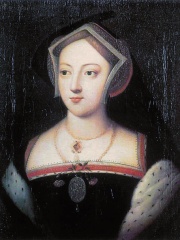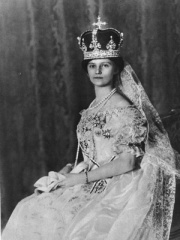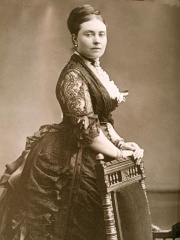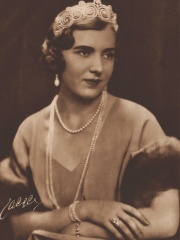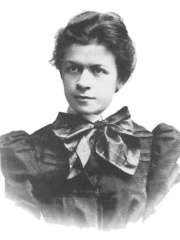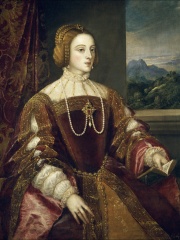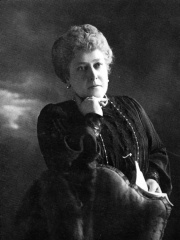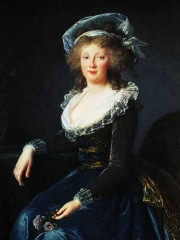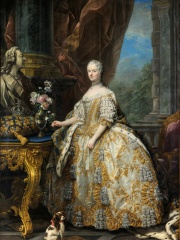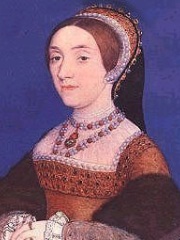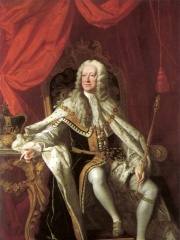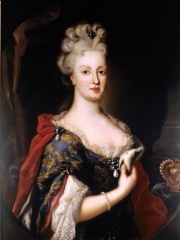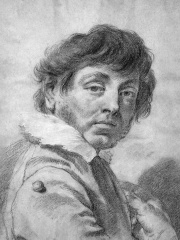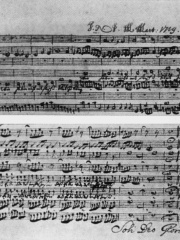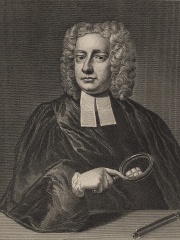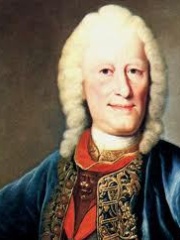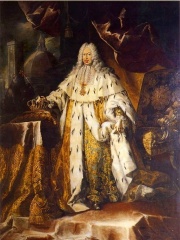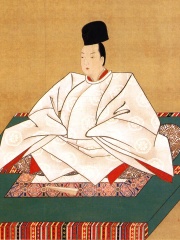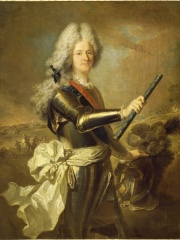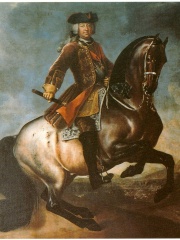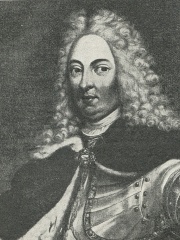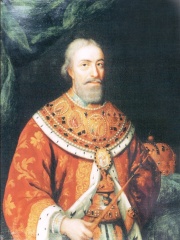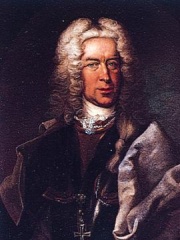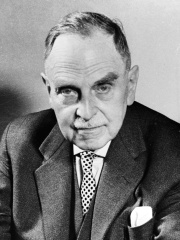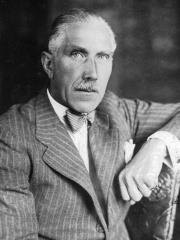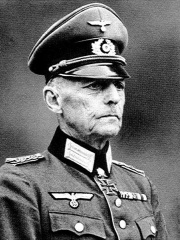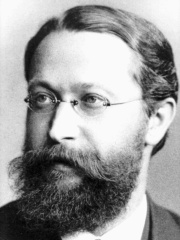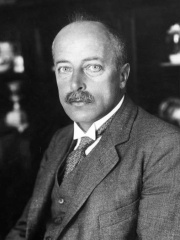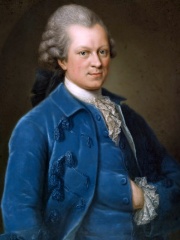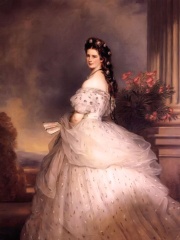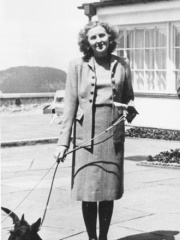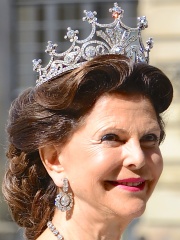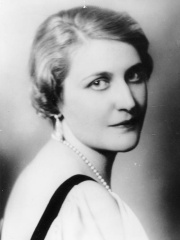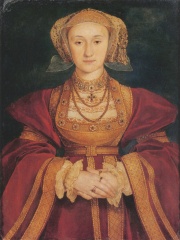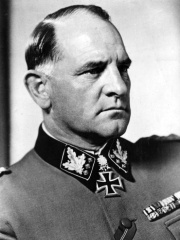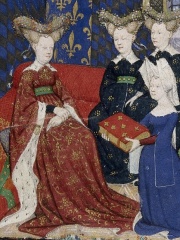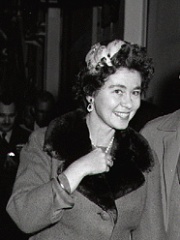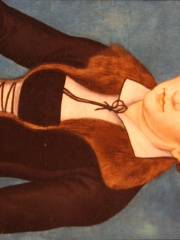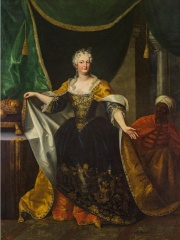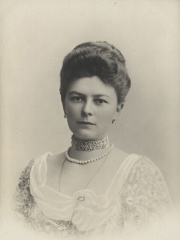COMPANION
Caroline of Ansbach
1683 - 1737
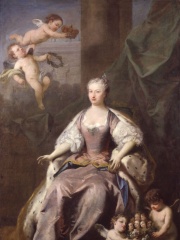
 Caroline of Ansbach
Caroline of Ansbach
Caroline of Brandenburg-Ansbach (Wilhelmina Charlotte Caroline; 1 March 1683 – 20 November 1737) was Queen of Great Britain and Ireland and Electress of Hanover from 11 June 1727 (O.S.) until her death in 1737 as the wife of King George II. Caroline's father, Margrave John Frederick of Brandenburg-Ansbach, belonged to a branch of the House of Hohenzollern and was the ruler of a small German state, the Principality of Ansbach. After Caroline was orphaned at a young age, she moved to the enlightened court of her guardians, King Frederick I and Queen Sophia Charlotte of Prussia. At the Prussian court, her previously limited education was widened and she adopted the liberal outlook possessed by Sophia Charlotte, who became her good friend and whose views influenced Caroline all her life. When she was a young woman, Caroline was much sought after as a bride. Read more on Wikipedia
Her biography is available in 43 different languages on Wikipedia. Caroline of Ansbach is the 49th most popular companion (down from 32nd in 2024), the 174th most popular biography from Germany (down from 159th in 2019) and the 4th most popular German Companion.
Caroline of Ansbach was the wife of King George II of Great Britain. She is most famous for being the mother of Queen Caroline of Great Britain, who married King George III.
Memorability Metrics
Page views of Caroline of Ansbach by language
Among COMPANIONS
Among companions, Caroline of Ansbach ranks 49 out of 784. Before her are Mary Boleyn, Zita of Bourbon-Parma, Victoria, Princess Royal, Ingrid of Sweden, Hafsa bint Umar, and Mileva Marić. After her are Isabella of Portugal, Ankhesenamun, Princess Helena of the United Kingdom, Maria Theresa of Naples and Sicily, Marie Leszczyńska, and Catherine Howard.
Most Popular Companions in Wikipedia
Go to all RankingsMary Boleyn
1499 - 1543
HPI: 78.19
Rank: 43
Zita of Bourbon-Parma
1892 - 1989
HPI: 78.14
Rank: 44
Victoria, Princess Royal
1840 - 1901
HPI: 77.93
Rank: 45
Ingrid of Sweden
1910 - 2000
HPI: 77.86
Rank: 46
Hafsa bint Umar
602 - 661
HPI: 77.69
Rank: 47
Mileva Marić
1875 - 1948
HPI: 77.68
Rank: 48
Caroline of Ansbach
1683 - 1737
HPI: 77.65
Rank: 49
Isabella of Portugal
1503 - 1539
HPI: 77.56
Rank: 50
Ankhesenamun
1347 BC - 1400 BC
HPI: 77.52
Rank: 51
Princess Helena of the United Kingdom
1846 - 1923
HPI: 77.31
Rank: 52
Maria Theresa of Naples and Sicily
1772 - 1807
HPI: 77.27
Rank: 53
Marie Leszczyńska
1703 - 1768
HPI: 77.24
Rank: 54
Catherine Howard
1523 - 1542
HPI: 77.14
Rank: 55
Contemporaries
Among people born in 1683, Caroline of Ansbach ranks 4. Before her are Philip V of Spain, Jean-Philippe Rameau, and George II of Great Britain. After her are René Antoine Ferchault de Réaumur, Maria Anna of Austria, 6th Dalai Lama, Giovanni Battista Piazzetta, Gottfried Silbermann, Christoph Graupner, John Theophilus Desaguliers, and Johann David Heinichen. Among people deceased in 1737, Caroline of Ansbach ranks 2. Before her is Antonio Stradivari. After her are Gian Gastone de' Medici, Grand Duke of Tuscany, Emperor Nakamikado, Louis Alexandre, Count of Toulouse, Charles Alexander, Duke of Württemberg, François Lemoyne, Rinaldo d'Este, James Louis Sobieski, Ferdinand Kettler, Vakhtang VI of Kartli, and Guido Starhemberg.
Others Born in 1683
Go to all RankingsPhilip V of Spain
POLITICIAN
1683 - 1746
HPI: 79.26
Rank: 1
Jean-Philippe Rameau
COMPOSER
1683 - 1764
HPI: 79.05
Rank: 2
George II of Great Britain
POLITICIAN
1683 - 1760
HPI: 77.79
Rank: 3
Caroline of Ansbach
COMPANION
1683 - 1737
HPI: 77.65
Rank: 4
René Antoine Ferchault de Réaumur
BIOLOGIST
1683 - 1757
HPI: 72.84
Rank: 5
Maria Anna of Austria
COMPANION
1683 - 1754
HPI: 69.05
Rank: 6
6th Dalai Lama
RELIGIOUS FIGURE
1683 - 1706
HPI: 68.66
Rank: 7
Giovanni Battista Piazzetta
PAINTER
1683 - 1754
HPI: 65.05
Rank: 8
Gottfried Silbermann
POLITICIAN
1683 - 1753
HPI: 65.04
Rank: 9
Christoph Graupner
COMPOSER
1683 - 1760
HPI: 64.46
Rank: 10
John Theophilus Desaguliers
PHYSICIST
1683 - 1744
HPI: 64.30
Rank: 11
Johann David Heinichen
COMPOSER
1683 - 1729
HPI: 63.22
Rank: 12
Others Deceased in 1737
Go to all RankingsAntonio Stradivari
DESIGNER
1644 - 1737
HPI: 81.39
Rank: 1
Caroline of Ansbach
COMPANION
1683 - 1737
HPI: 77.65
Rank: 2
Gian Gastone de' Medici, Grand Duke of Tuscany
POLITICIAN
1671 - 1737
HPI: 73.28
Rank: 3
Emperor Nakamikado
POLITICIAN
1702 - 1737
HPI: 70.54
Rank: 4
Louis Alexandre, Count of Toulouse
POLITICIAN
1678 - 1737
HPI: 67.00
Rank: 5
Charles Alexander, Duke of Württemberg
NOBLEMAN
1684 - 1737
HPI: 66.28
Rank: 6
François Lemoyne
PAINTER
1688 - 1737
HPI: 64.12
Rank: 7
Rinaldo d'Este
NOBLEMAN
1655 - 1737
HPI: 64.11
Rank: 8
James Louis Sobieski
POLITICIAN
1667 - 1737
HPI: 62.47
Rank: 9
Ferdinand Kettler
POLITICIAN
1655 - 1737
HPI: 61.67
Rank: 10
Vakhtang VI of Kartli
POLITICIAN
1675 - 1737
HPI: 60.70
Rank: 11
Guido Starhemberg
MILITARY PERSONNEL
1657 - 1737
HPI: 59.29
Rank: 12
In Germany
Among people born in Germany, Caroline of Ansbach ranks 174 out of 7,253. Before her are Otto Hahn (1879), Valéry Giscard d'Estaing (1926), Carl Orff (1895), Franz von Papen (1879), Olaf Scholz (1958), and George II of Great Britain (1683). After her are Max Ernst (1891), Gerd von Rundstedt (1875), Karl Ferdinand Braun (1850), Max von Laue (1879), Frederick William I of Prussia (1688), and Gotthold Ephraim Lessing (1729).
Others born in Germany
Go to all RankingsOtto Hahn
CHEMIST
1879 - 1968
HPI: 78.04
Rank: 168
Valéry Giscard d'Estaing
POLITICIAN
1926 - 2020
HPI: 78.01
Rank: 169
Carl Orff
COMPOSER
1895 - 1982
HPI: 77.97
Rank: 170
Franz von Papen
POLITICIAN
1879 - 1969
HPI: 77.94
Rank: 171
Olaf Scholz
POLITICIAN
1958 - Present
HPI: 77.93
Rank: 172
George II of Great Britain
POLITICIAN
1683 - 1760
HPI: 77.79
Rank: 173
Caroline of Ansbach
COMPANION
1683 - 1737
HPI: 77.65
Rank: 174
Max Ernst
PAINTER
1891 - 1976
HPI: 77.62
Rank: 175
Gerd von Rundstedt
MILITARY PERSONNEL
1875 - 1953
HPI: 77.61
Rank: 176
Karl Ferdinand Braun
INVENTOR
1850 - 1918
HPI: 77.57
Rank: 177
Max von Laue
PHYSICIST
1879 - 1960
HPI: 77.54
Rank: 178
Frederick William I of Prussia
POLITICIAN
1688 - 1740
HPI: 77.54
Rank: 179
Gotthold Ephraim Lessing
WRITER
1729 - 1781
HPI: 77.54
Rank: 180
Among COMPANIONS In Germany
Among companions born in Germany, Caroline of Ansbach ranks 4. Before her are Empress Elisabeth of Austria (1837), Eva Braun (1912), and Queen Silvia of Sweden (1943). After her are Magda Goebbels (1901), Anne of Cleves (1515), Sepp Dietrich (1892), Isabeau of Bavaria (1370), Frederica of Hanover (1917), Katharina von Bora (1498), Elisabeth Christine of Brunswick-Wolfenbüttel (1691), and Sophie, Duchess of Hohenberg (1868).
Empress Elisabeth of Austria
1837 - 1898
HPI: 89.61
Rank: 1
Eva Braun
1912 - 1945
HPI: 82.22
Rank: 2
Queen Silvia of Sweden
1943 - Present
HPI: 78.26
Rank: 3
Caroline of Ansbach
1683 - 1737
HPI: 77.65
Rank: 4
Magda Goebbels
1901 - 1945
HPI: 76.09
Rank: 5
Anne of Cleves
1515 - 1557
HPI: 75.79
Rank: 6
Sepp Dietrich
1892 - 1966
HPI: 75.24
Rank: 7
Isabeau of Bavaria
1370 - 1435
HPI: 75.11
Rank: 8
Frederica of Hanover
1917 - 1981
HPI: 75.08
Rank: 9
Katharina von Bora
1498 - 1552
HPI: 74.61
Rank: 10
Elisabeth Christine of Brunswick-Wolfenbüttel
1691 - 1750
HPI: 74.41
Rank: 11
Sophie, Duchess of Hohenberg
1868 - 1914
HPI: 74.38
Rank: 12
